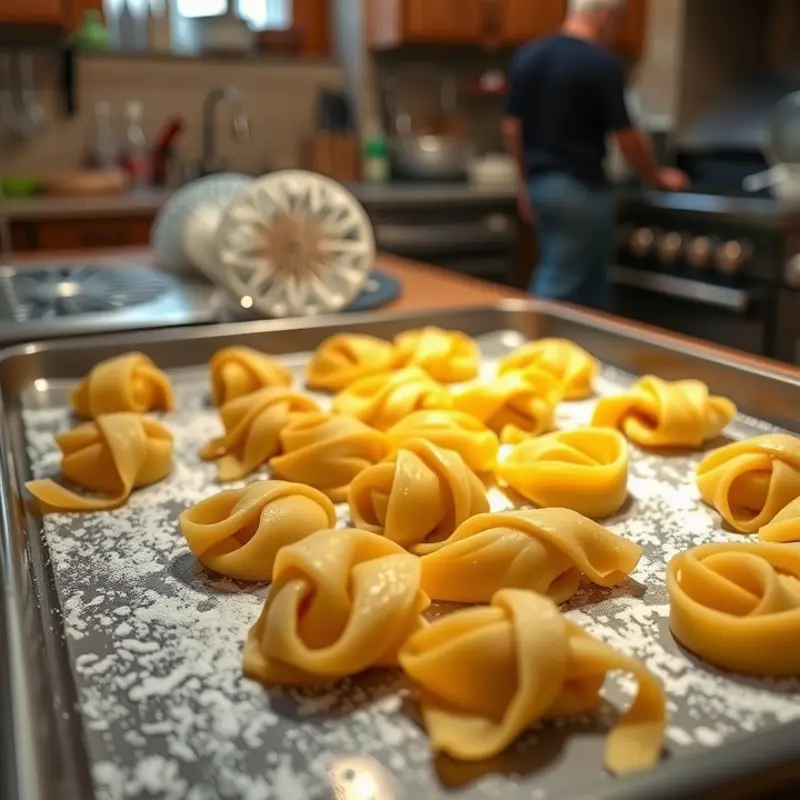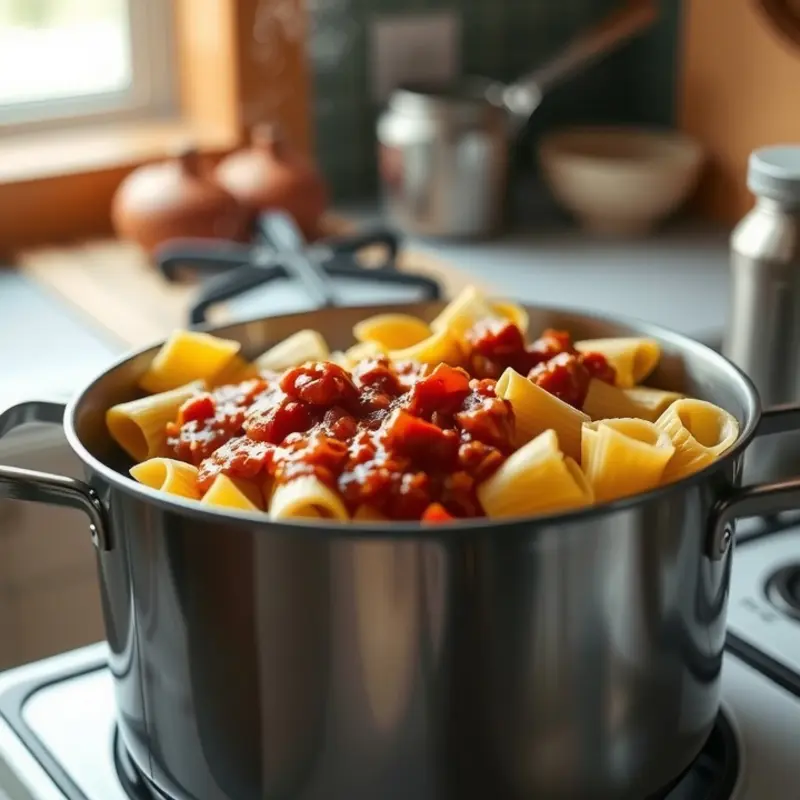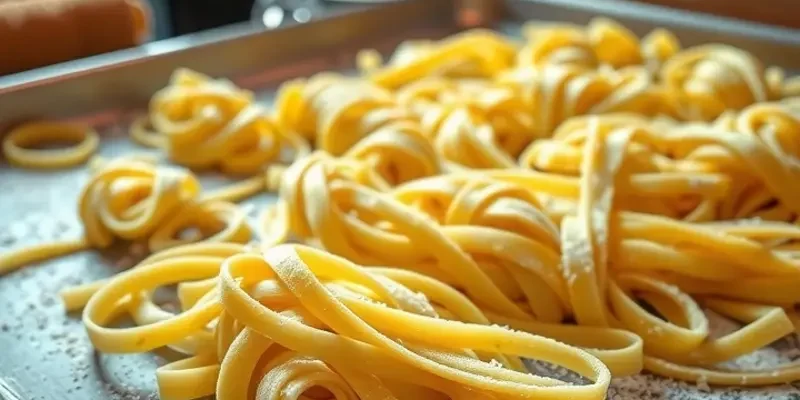Freezing fresh pasta is a fantastic way to extend its shelf life, minimize food waste, and always have a delicious meal at hand. By understanding the proper techniques for freezing, you can maintain the quality and flavor of your pasta while ensuring safety and efficiency in your kitchen. Follow these practical tips to manage your food better and enjoy the benefits of homemade pasta anytime.
Preparing Fresh Pasta for Freezing

To freeze your fresh pasta effectively, start by ensuring it’s well-prepared. Here’s a step-by-step guide:
-
Make Your Pasta: Prepare your fresh pasta as you normally would, whether it’s fettuccine, gnocchi, or ravioli. The key here is to achieve the desired texture and thickness. Take care to use fresh ingredients, which contributes to the quality of your frozen pasta.
-
Dust with Flour: Lightly dust the pasta with flour to prevent sticking. Semolina flour is ideal as it provides a gritty texture that helps separate pasta strands or pieces. This step might seem minor, but it’s essential for preserving the individual shapes post-freezing.
-
Cut and Shape: Cut your pasta into desired shapes. If making stuffed pasta, ensure the filling is cooled beforehand. This not only makes the pasta easier to handle but also prevents partially cooked fillings from becoming watery and affecting pasta integrity during freezing.
-
Pre-Freeze: Arrange the pasta in a single layer on a baking sheet. Leave space between pieces to avoid clumping. The pre-freezing process is crucial for maintaining shape and texture. Use parchment paper to prevent the pasta from sticking to the sheet.
-
Freeze for 30 minutes: Place the baking sheet in the freezer for about 30 minutes until the pasta is firm. This stage helps lock in the pasta’s shape and slightly dehydrates the surface, reducing crystal formation.
-
Pack Properly: Once firm, transfer the pasta to airtight freezer bags or containers. Removing air is vital to prevent freezer burn, which can degrade both taste and texture. Use a vacuum sealer if available, or gently press air out from bags.
-
Label and Date: Don’t forget to label and date your bags! This helps keep track of freshness and usage. Frozen pasta retains its quality for up to three months, so keep this timeframe in mind to enjoy optimal flavor.
By following these steps, you can ensure fresh pasta is ready for future meals without loss of quality. Pair your properly frozen pasta with fresh sauces and ingredients to create quick, minimal-prep dishes. For more on creating deliciously simple meals, explore minimal prep dinner ideas. Ensuring that your pasta and other ingredients are prepped for freezing can significantly reduce waste and enhance your meal planning capabilities.
Thawing and Cooking Frozen Pasta

Knowing how to properly thaw and cook your frozen pasta is as important as how you freeze it. Proper thawing maintains the pasta’s texture and flavor. For the best results, transfer your frozen pasta to the refrigerator and let it thaw overnight. This slow thawing process helps the pasta maintain its structure and taste. However, if you’re short on time, you can cook it directly from frozen. Most pasta will naturally thaw in boiling water, making it a quick option for last-minute meals.
When cooking frozen pasta, remember that it generally requires 1-2 minutes more than fresh pasta. This extended cook time ensures it reaches the desired tenderness. It’s crucial to taste a piece as it cooks to check for doneness. This approach prevents overcooking, which can lead to mushy results.
Sauce pairing is another key factor. Avoid using the microwave to reheat thawed pasta, as it often alters the texture unfavorably. Instead, use a pan to gently guide the pasta with your favorite sauce. This method enhances flavor infusion and ensures even heating. A well-chosen sauce can elevate your pasta dish, turning simple noodles into a culinary delight.
When cooking your pasta directly from frozen, ensure there’s an adequate water volume in your pot. A generous amount of water helps the pasta cook evenly, preventing clumping and uneven textures. Stir the pot occasionally to stop the pasta pieces from sticking together.
Once your pasta reaches the perfect texture, it’s essential to toss it with sauce immediately. This quick transition ensures the sauce clings to the pasta uniformly, enhancing the overall flavor profile. Delaying this step can result in pasta that clumps together or absorbs too much sauce, losing its subtle nuances.
Embracing these tips allows you to enjoy the convenience of homemade pasta anytime. Incorporating effective thawing and cooking strategies minimizes food waste and supports efficient meal planning. For additional insights on minimizing kitchen waste, explore this guide on low-waste cooking and prep.
Final words
Freezing fresh pasta is a smart way to ensure you always have a quick meal solution at hand while significantly reducing food waste. By preparing pasta correctly for freezing, and knowing how to thaw and cook it later, you can maintain the delicious flavor and texture that came from your kitchen. These practical tips not only improve your food management at home but also help you enjoy homemade meals any night of the week. With a little planning, you can make fresh pasta a staple in your busy life.







